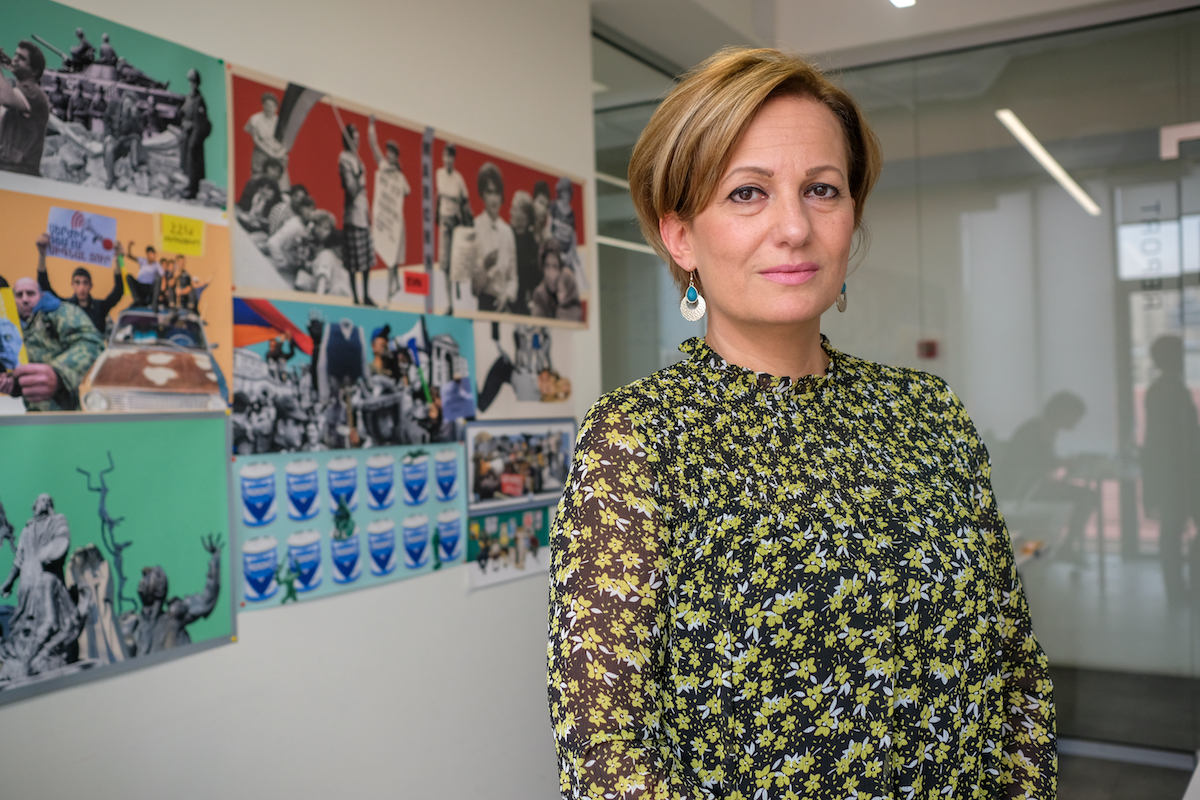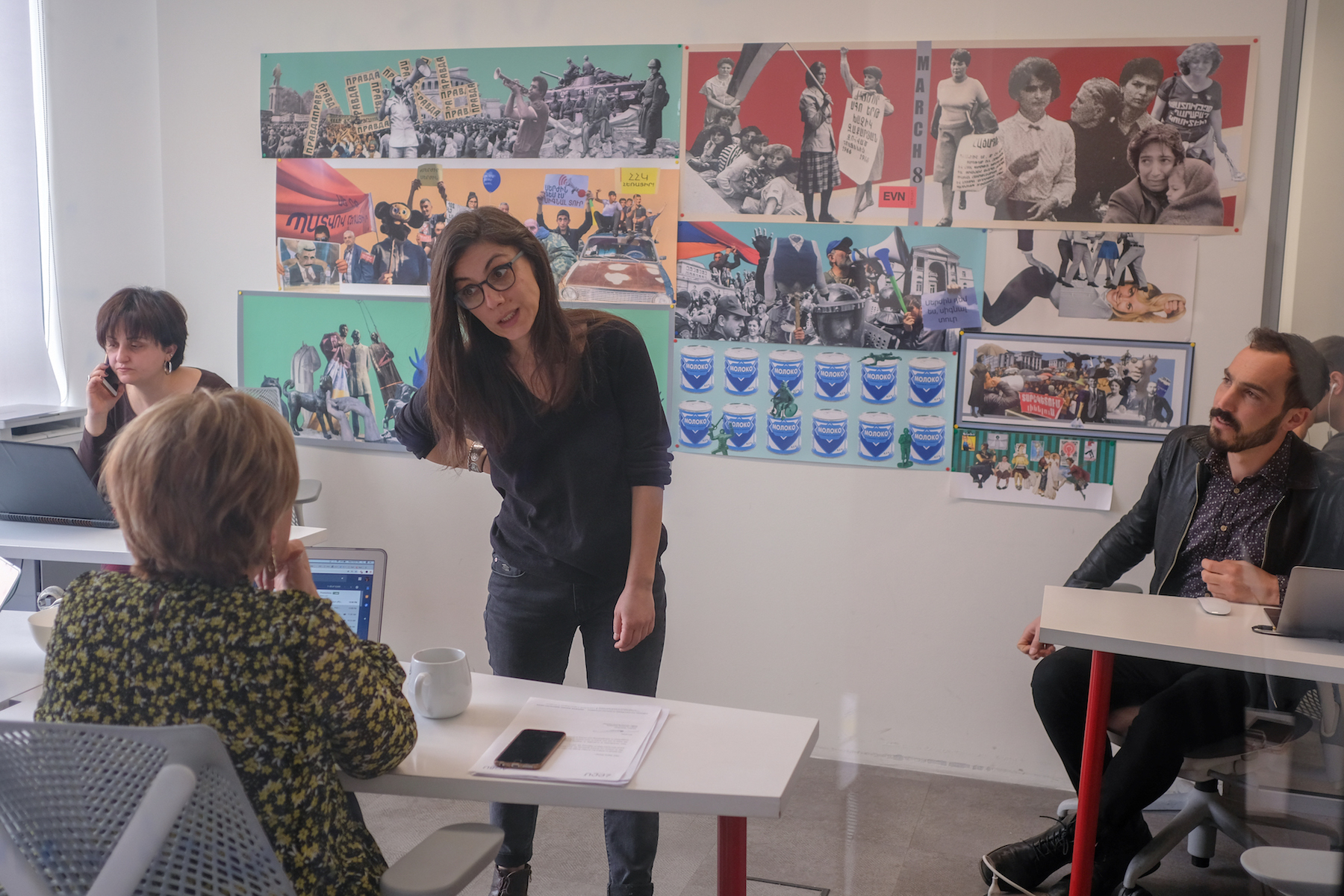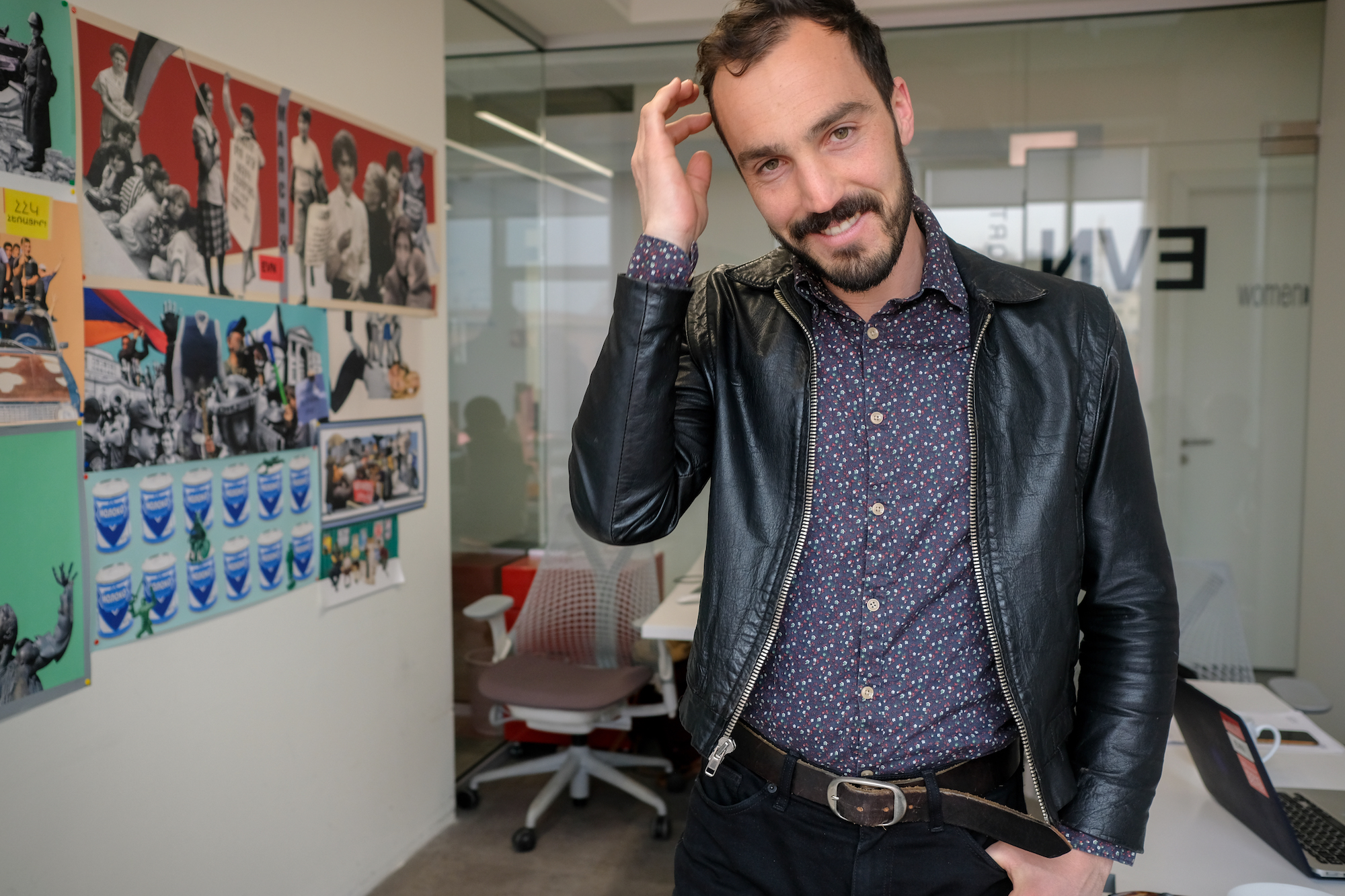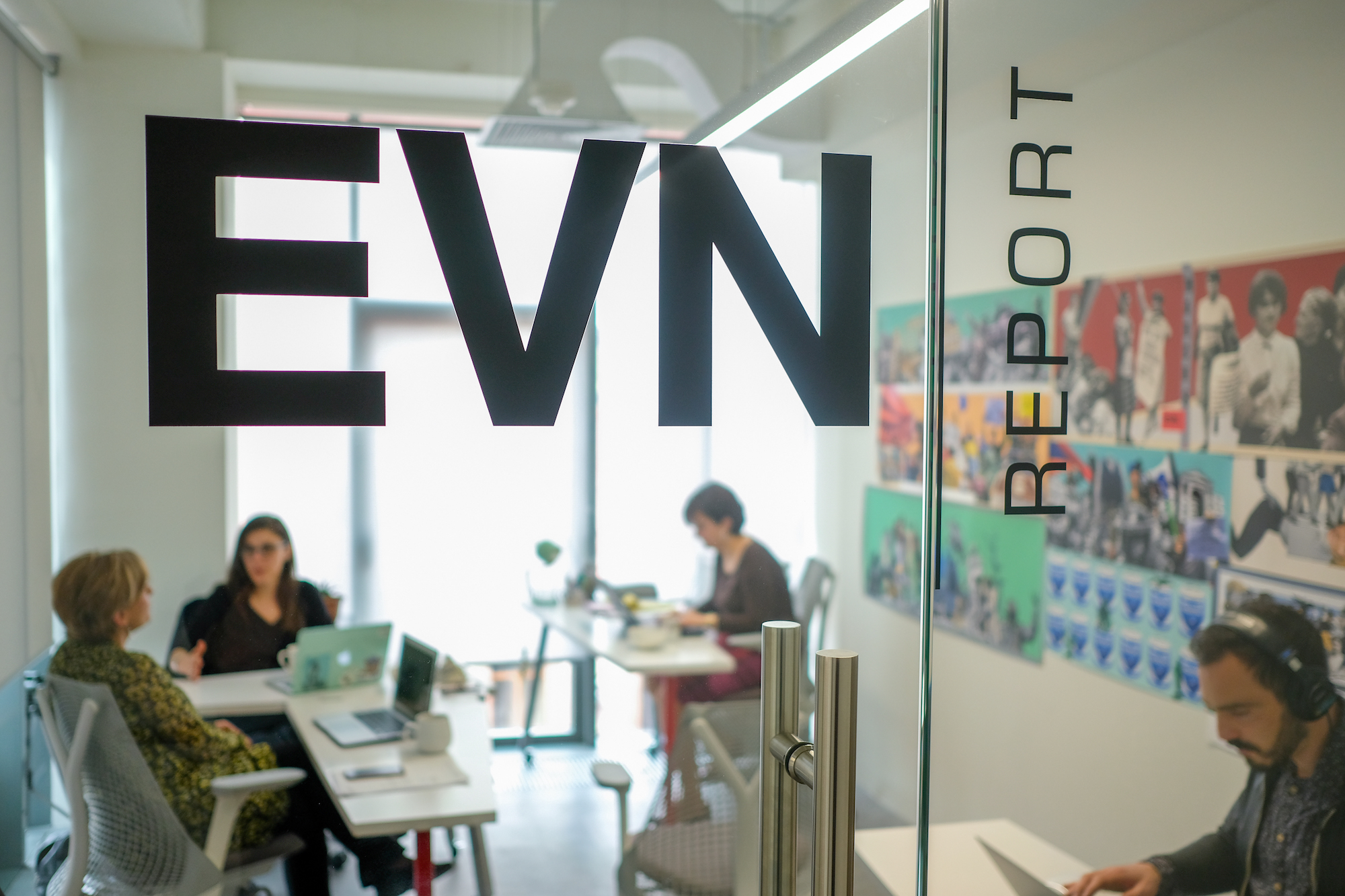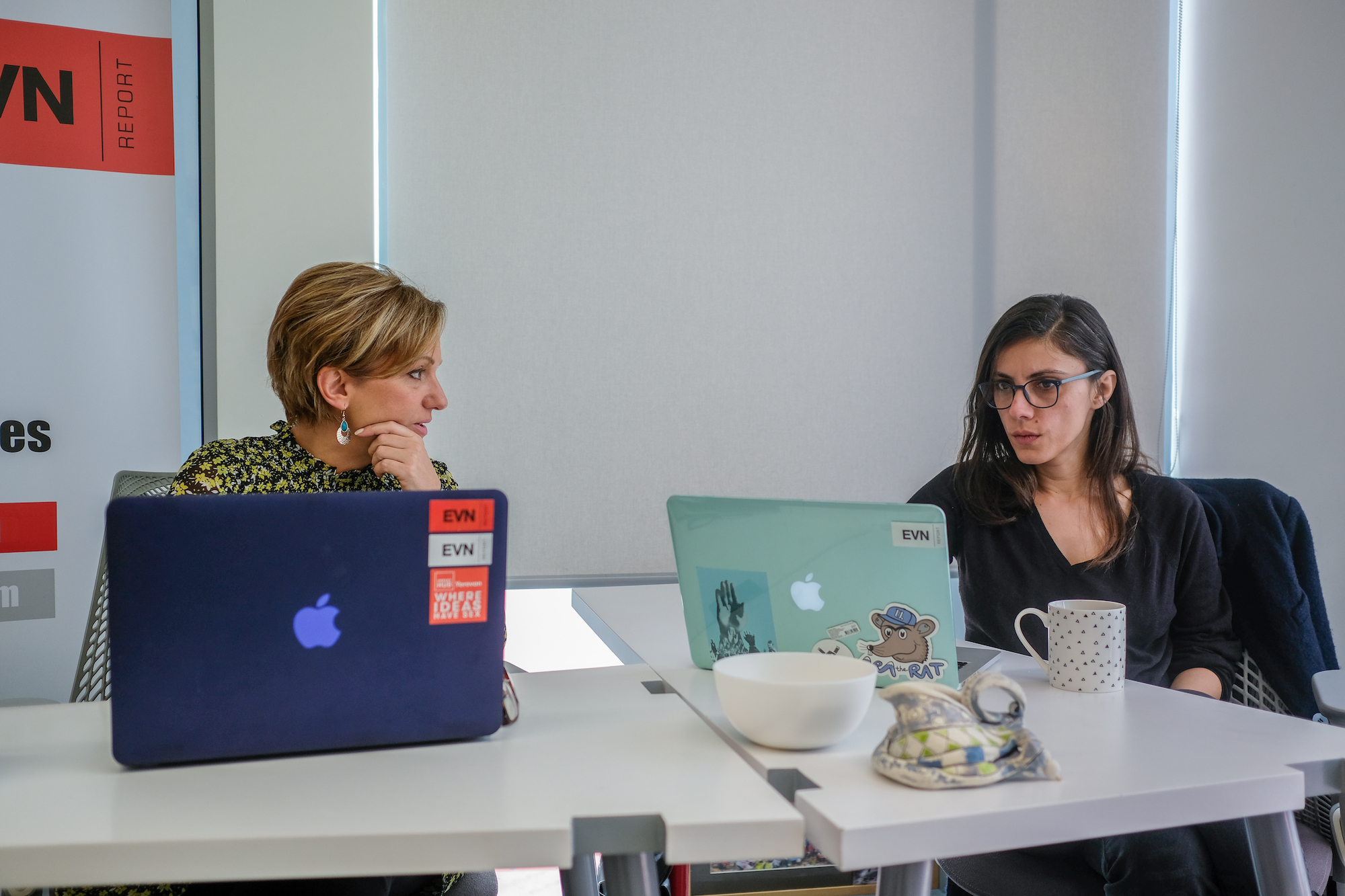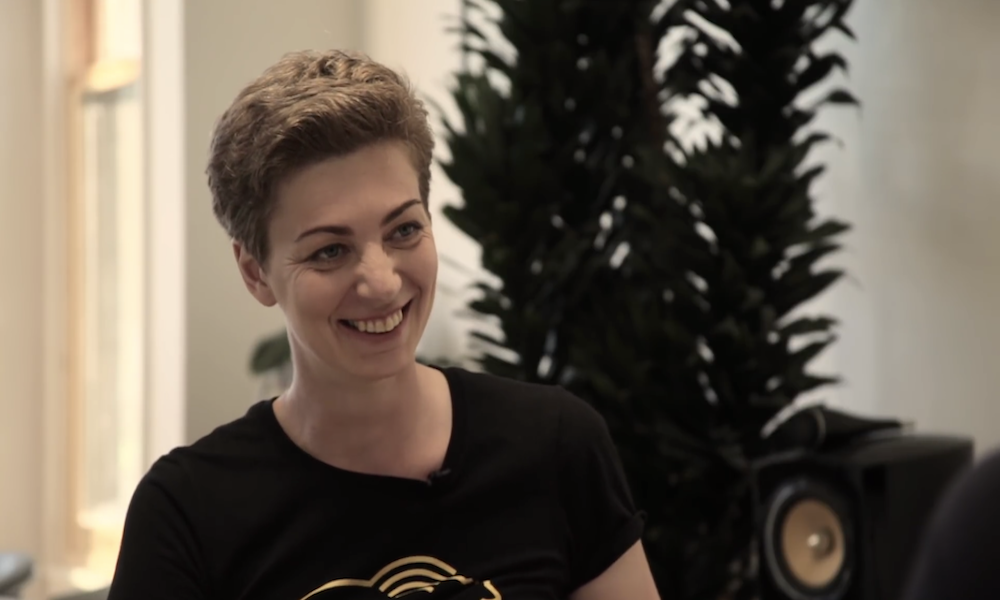‘It’s messed up.’ How one news outlet is trying to reshape the media in post-revolution Armenia
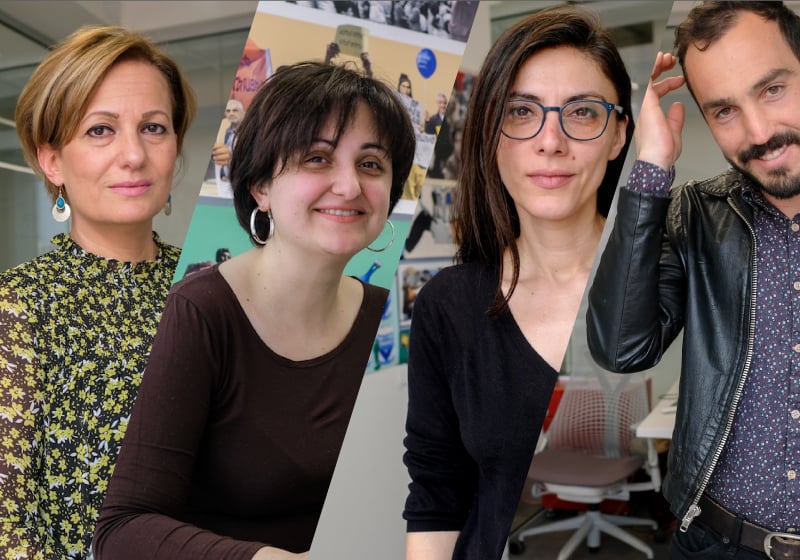
As it marks its second birthday, the English language EVN Report can look back on dramatic audience growth and some success in nurturing a demand for independent, long-form journalism. The Calvert Journal took a look at how far EVN Report has come, and where it wants to go
When Armenia’s Velvet Revolution broke out last year, Yerevan-based EVN Report was a tiny online news outlet with just a handful of regular readers. But as tens of thousands of Armenians took to the streets in protest against the regime, EVN Report’s position as one of the country’s few local English language resource caused a huge audience spike. First, their following on social media doubled in size, then it quadrupled — and soon it was 10 times bigger. On the day mass demonstrations led to the resignation of President Serzh Sargsyan, one of their Facebook Lives got 44,000 views.
“Our numbers exploded,” says Maria Titizian, the founder and chief editor of EVN Report, in a Skype interview. “It was a tremendous love fest and we had people just come in and randomly donate money, or bring us food: I had students dropping by to give us chocolate, pizza and wine.”
While its growth has fallen off from the heady days of the spring 2018, EVN Report has gone from strength to strength since opposition leader Nikol Pashinyan swept to power. As it marks its two year anniversary this month, it can credibly claim to have established itself as one of the more trusted news sources in a country where politics continues to move at breakneck pace (the revolution was followed by elections and tectonic shifts in the make-up of the ruling elite). Committed to training a new generation of journalists, EVN Report is also exploring formats rarely used by local media outlets, particularly podcasts.
Titizian says she first thought about setting up something like EVN Report during Armenia’s brief military conflict with Azerbaijan in April 2016. “I realised there wasn’t a lot of English-language coverage taking place,” she says. “It just felt like we were in an echo chamber. All the coverage was in Armenian.” When it went live the following year, its name — EVN is the international code for Yerevan airport — was chosen, according to Titizian, to represent the site’s role as “a gateway for the world to Armenia and a gateway for Armenia to the world.”
But EVN Report’s goals do not stop at simply relaying Armenian news in English. They want nothing less than to shape Armenia’s post-revolution media landscape, creating a demand for independent, high quality journalism. “There’s an information war taking place right now and I want us to be the voice of credibility, accuracy and truth - and do it in a really compelling way; a way that educates, informs, and inspires people,” says Titizian.
Apart from on social media, EVN Report does not cover breaking news, focusing instead on long-form journalism and, increasingly, podcasts. In the future, they plan on expanding into video. Their articles are illustrated with colourful graphics designed by managing editor Roubina Margossian.
Titizian, who is also a full-time lecturer at the American University of Armenia, says she would like the outlet to be seen as the “Armenian New Yorker,” though she concedes there are serious problems finding trained local writers — she laughs about how much time she spends pulling articles into shape. “I want us to grow,” she says. “I want us to be able to have staff writers and nurture young journalists, and train them, and be an important part of framing and propelling the public discourse.”
One of the young journalists working for EVN Report is Arpine Haroyan, 23, currently in her last year at university. She specialises in long-reads on cultural and historical topics, with a particular focus on issues that affect women. Her last article was about Mari Beylerian, an Armenian writer, feminist and public figure, who perished in the Armenian genocide of 1915. “The media landscape is really messed up here,” she says in a telephone interview. “EVN’s independence is very important for me.”
While Armenia has enjoyed an unprecedented level of press freedom since the revolution, recent criticism of some media outlets by President Nikol Pashinyan has sparked worries this may not last. But Titizian says that the problem is not Pashinyan, rather media outlets controlled by political groups that operate without any journalistic standards, seeking only to discredit. “The irresponsibility and lack of integrity is really frightening,” she says, adding she understands some of the frustrations of Pashinyan and his team. “I’m all for criticism… but what they [Pashinyan’s opponents] are doing is absolutely destructive because they are spreading rumours and lies.”
EVN Report was officially established in March 2017 with international grants, including from the National Endowment of Democracy. At first, it was run by just Titizian and Margossian. “I didn’t have a five year plan, I didn’t have any money, we didn’t have an office, I was full-time faculty at the American University. In retrospect, it shouldn’t have worked,” says Titizian. Now, they have four full-time employees and are working towards building a whole newsroom.
But Titizian is wary of expanding too quickly: rapid audience growth during the revolution was not an exception rather than the norm, and she says readers from the Armenian diaspora can be fickle. EVN Report currently seeks donations and Titizian says she is looking for a model that will guarantee a sustainable, and independent, future. “I can raise a lot of money now,” she says, “but what happens in two years when the interest shifts?”
Titizian grew up in Canada and moved to Armenia in 2001 with her husband and two children, later working for CivilNet, an Armenian outlet that produces some material in English. While most of EVN Report’s audience is abroad, Titizian says she has been surprised by the local interest in their writing. Before the revolution, 48 percent of EVN Report’s traffic was Armenian, and it remains over 35 percent (EVN Report also has a small section of articles in Armenian). Abroad, the biggest reader community is in the United States.
While EVN Report does not shy away from writing about issues including the rights of sexual minorities and the conflict between Armenia and Azerbaijan over the mountainous region of Nagorno-Karabakh, Titizian says she has to maintain a delicate balance between professional journalism and respect for local realities — an approach that some, she admits, might characterise as self-censorship. “They say that you’re successful when you have enemies: that may be true, but you can also present stories in a way that gets people to think,” she says. “If you have a voice that you want to be heard, you have to sometimes be even-keeled. If we talk all the time about women’s rights and LGBT rights and how intolerant Armenia is I will be alienating a portion of my readership that I want to keep engaged.”
How much EVN Report will succeed in changing attitudes depends on the extent to which the tumultuous political change in Armenia will be reflected in broader social, cultural, and economic trends. Young journalist Haroyan is hopeful. She says that she believes Armenia’s revolution means people are changing, and so is their consumption of journalism. “More people are becoming media literate,” she says, “starting to read quality journalism and understand what’s good and what’s bad.”
